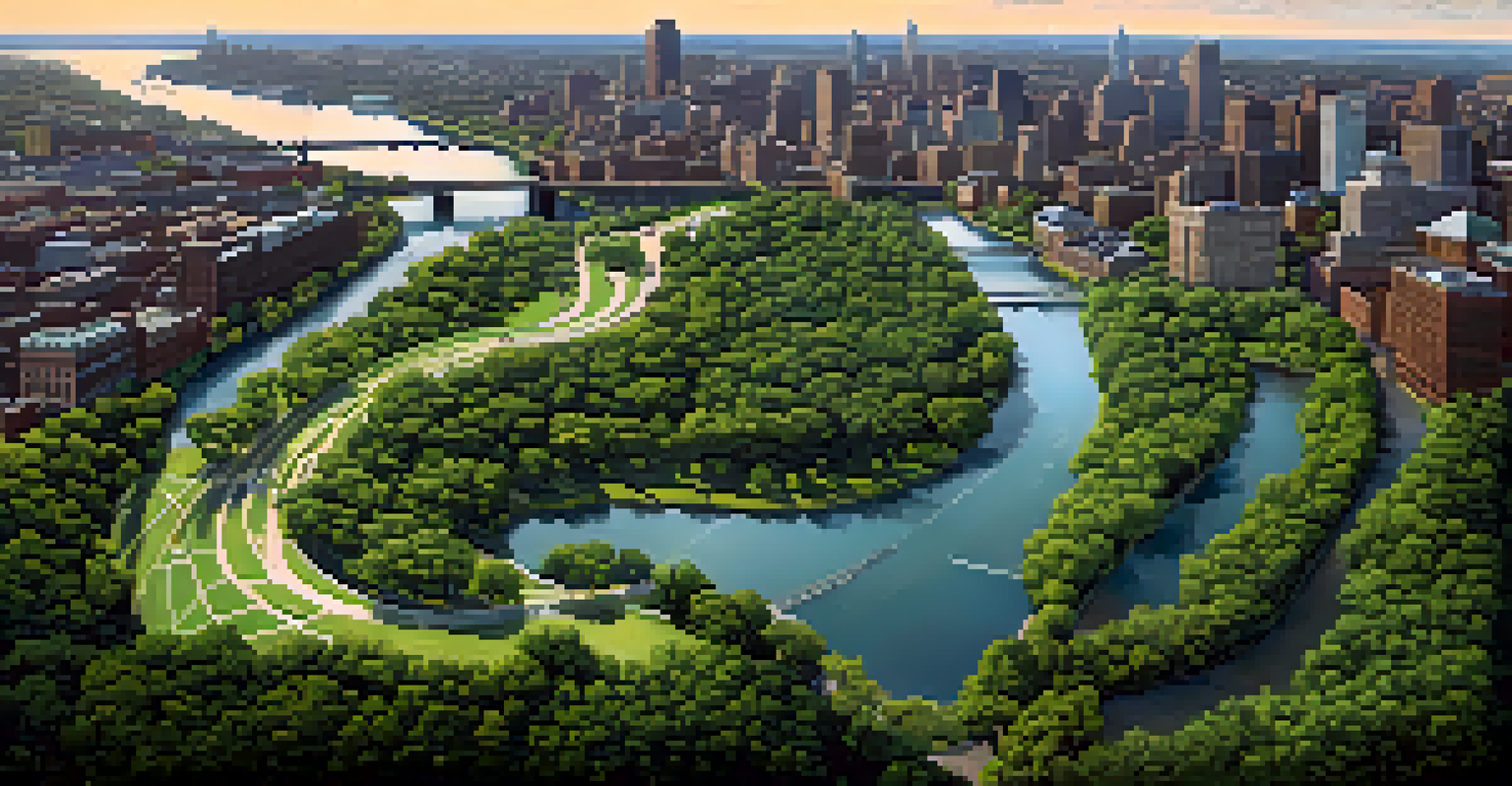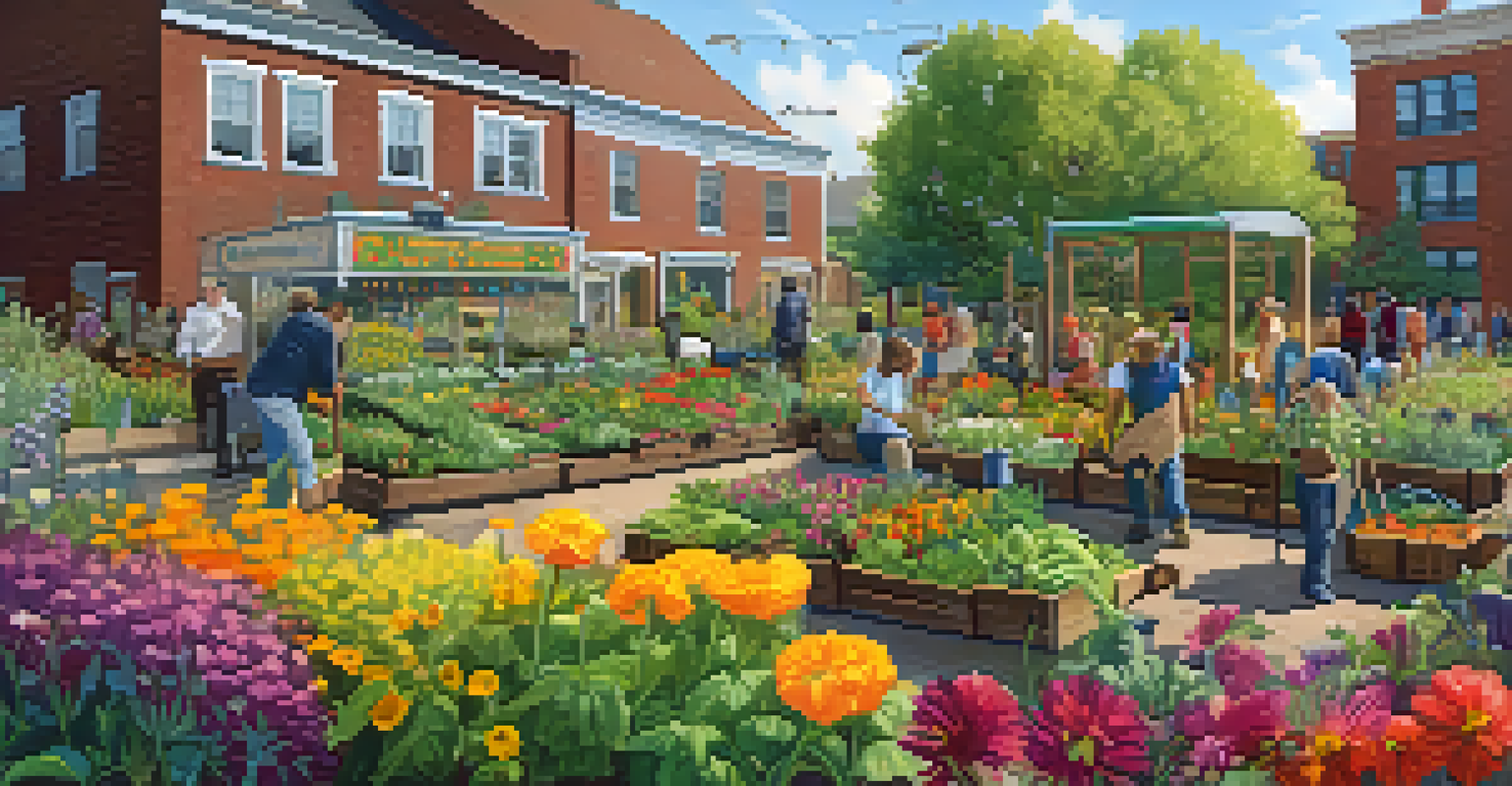The Design Evolution of Boston's Iconic Public Parks

A Brief History of Boston's Green Spaces
Boston's public parks have a rich history that dates back to the 1630s. The first official park, Boston Common, was established as a communal grazing area for livestock. Over the years, this green space began to evolve, reflecting the changing needs and tastes of the city’s inhabitants.
Parks are not just places to rest; they are the lungs of our cities, providing essential breathing space for both people and nature.
As Boston grew, so did the demand for recreational areas. The establishment of the Emerald Necklace, a series of parks linked by parkways, marked a significant shift in urban park design during the 19th century. This innovative design not only beautified the city but also provided vital green space for relaxation and social interaction.
Today, Boston's parks are not just historical landmarks; they serve as vibrant community hubs. Understanding their history helps us appreciate the careful planning and design that went into creating these cherished spaces.
The Role of Frederick Law Olmsted
Frederick Law Olmsted, often hailed as the father of American landscape architecture, played a pivotal role in shaping Boston's parks. His vision for the Emerald Necklace was revolutionary, emphasizing the importance of nature in urban life. Olmsted believed that parks should be accessible, aesthetically pleasing, and beneficial to public health.

His designs included winding paths, serene water features, and carefully placed trees, creating a sense of tranquility amidst the bustling city. Olmsted's work was not just about beauty; it was also about creating a social space where people from all walks of life could come together.
Boston Parks' Historical Evolution
Boston's parks have transformed from communal grazing areas to vibrant community spaces that reflect the city's changing needs.
The influence of Olmsted's designs can still be seen today in Boston’s parks, which continue to attract residents and visitors alike. His legacy reminds us of the essential role parks play in fostering community and enhancing urban environments.
The Transformation of Boston Common
Boston Common, the oldest public park in the United States, has undergone significant transformations since its inception. Originally used for grazing livestock, the park evolved into a space for public gatherings, protests, and celebrations. Over the years, it has also served as a site for military encampments and a refuge during times of crisis.
The best thing about parks is that they can bring people together, no matter their background, in a shared appreciation for nature and community.
In the 19th century, the park was redesigned to enhance its beauty and utility, incorporating paths, fountains, and even a bandstand. Today, it serves as a central gathering place for events like the Boston Marathon and concerts, showcasing its adaptability and enduring relevance.
The ongoing renovations and improvements reflect the park's role as a vital public space, ensuring it meets the needs of modern Boston residents while preserving its historical significance.
Parks for the People: The 20th Century Shift
The 20th century brought a new perspective on public parks in Boston, focusing on accessibility and inclusivity. As urbanization increased, city planners recognized the need for parks that catered to diverse populations. This led to the creation of playgrounds, sports facilities, and community gardens throughout the city.
The rise of the parks movement highlighted the importance of green spaces in urban settings. Advocates pushed for the design of parks that not only looked beautiful but also served practical functions, such as recreational activities and community events. This shift fostered a deeper connection between the city and its inhabitants.
Olmsted's Lasting Influence
Frederick Law Olmsted's visionary designs for the Emerald Necklace emphasized accessibility and nature's role in urban life.
The transformation of Boston’s parks during this era laid the groundwork for the inclusive public spaces we see today. These parks are designed to accommodate everyone, ensuring that all residents can enjoy the benefits of nature and recreation.
Innovative Designs in Modern Parks
In recent years, Boston's parks have embraced innovative design techniques that prioritize sustainability and environmental health. Modern parks now incorporate native plants, rain gardens, and permeable surfaces to manage stormwater and enhance biodiversity. These eco-friendly features not only beautify the parks but also provide essential habitats for wildlife.
Additionally, modern park designs focus on creating multifunctional spaces that can accommodate a variety of activities. For example, the Rose Kennedy Greenway transformed an elevated highway into a vibrant park that hosts art installations, food trucks, and community events. This adaptive reuse of space exemplifies the creativity in contemporary urban design.
By integrating nature with innovative design, Boston's parks are becoming more resilient and better suited to meet the needs of future generations. This evolution reflects a growing awareness of environmental issues and a commitment to sustainable urban living.
Community Engagement in Park Development
Community engagement has become a cornerstone of park development in Boston. City planners and landscape architects now actively seek input from residents to ensure that parks reflect the needs and desires of the communities they serve. This collaborative approach fosters a sense of ownership and pride among residents.
Public meetings, surveys, and workshops have become common practices in the planning process. By involving local residents, planners can identify specific features that will enhance the park experience, such as playgrounds, walking trails, and picnic areas. This direct feedback helps create spaces that are not only functional but also cherished by the community.
Focus on Community Engagement
Active community involvement in park development ensures that Boston's green spaces meet the diverse needs of residents.
As a result, Boston’s parks are evolving into dynamic spaces that truly cater to the needs of their users. This emphasis on community input ensures that parks remain vital and relevant, adapting to changing demographics and cultural trends.
Looking Ahead: The Future of Boston's Parks
As Boston continues to grow and change, the future of its public parks looks promising. City officials and community advocates are committed to ongoing improvements and expansions, ensuring that green spaces remain integral to urban life. Future developments may include more green roofs, urban forests, and enhanced connectivity between parks.
The emphasis on climate resilience will also shape the future of park design. With increasing concerns about climate change, parks will be designed to withstand extreme weather events while promoting biodiversity. This forward-thinking approach aims to create a sustainable urban environment that benefits both people and nature.

Ultimately, the evolution of Boston's parks is a testament to the city's commitment to enhancing the quality of life for its residents. By continuing to prioritize green spaces, Boston can foster a more vibrant, healthy, and engaged community for generations to come.